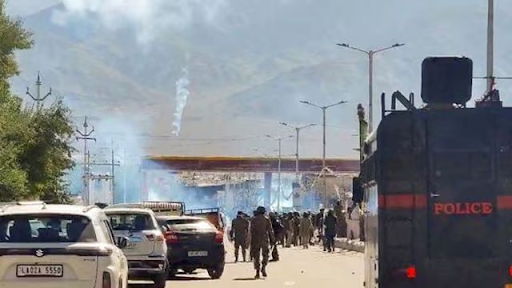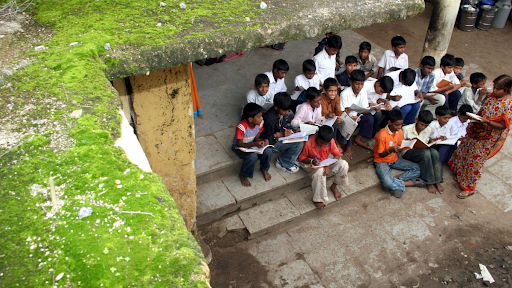




Copyright infringement not intended
Picture Courtesy: https://www.indiatoday.in/law/supreme-court/story/supreme-court-notice-centre-bihar-on-rjd-65-per-cent-quota-backward-classes-patna-high-court-2595114-2024-09-06
The Chief Justice of India highlighted federalism and its complexities and dynamic nature and advocated for a comprehensive understanding of this relationship.
It is a system of governance where power is divided between a central authority and various administrative units such as states or provinces. The division of power allows balance of power and ensures that both national and regional interests are served in a comprehensive way.
Federalism is important for India due to its diversity in terms of culture, language and geography, it allows for regional autonomy while maintaining national unity, which promotes states to address their unique needs and challenges.
The origin of federalism in India can be traced back to the Government of India Act, 1935. This act introduced a federal framework for the first time in India and established a division of power between the center and provincial government.
During the Constituent Assembly debates, the leaders drew inspiration from various sources, including Government of India 1935 and created a Constitutional framework that balance local autonomy and national development goals.
The Indian Constitution does not explicitly define India as a federal state, but includes several key provisions that establish a federal structure.
The Constitution defined the legislative powers of the Union and state governments through the 7th Schedule, which contains;
Under Article 280, the Constitution mandates the establishment of a finance Commission every five years to recommend the distribution of taxes between the Union and the states to address fiscal imbalance, and to ensure that states have adequate resources to meet their development needs.
In 2017, Goods and Services Tax (GST) was implemented, which created a unified indirect tax system and established the GST Council, including representation from both union and state governments to manage tax policies, and to ensure that both the center and the states have a say in tax matters, under the principle of Cooperative federalism.

In the State of West Bengal v/s Union of India case (1963), the Supreme Court held that the Union government could legislate on subjects even if they fell under the state list if they served national interest.
In the S.R. Bommai v/s Union of India case (1994), the Supreme Court ruled that president rule could only be applied in exceptional cases, the federal structure should not be undermined by arbitrary actions.
In the Kesavananda Bharati v/s State of Kerala case (1973), The Supreme Court introduced the doctrine of basic structure; it highlighted that certain fundamental features of the Constitution, including federalism, cannot be modified or abolished by amendments.
A trend towards centralization has emerged with the Union government exercising increased control over the state subjects, for example, the frequent use of Article 356 to impose president rule in a state, raises concern about the misuse of the power.
Economic inequalities among states is a challenge for cooperative federalism. States with more resources can invest in infrastructure and public services, while the poorer states struggle to meet basic needs. Unequal development and can increase regional inequalities, which can obstruct the overall progress of the nation and create tension between states.
Inter-State water disputes such as Cauvery and Krishna River highlights the limitations of cooperative federalism, mechanisms should be developed to resolve Interstate issues peacefully.
The introduction of goods and services tax has centralized indirect tax administration, which some states argue limited their fiscal autonomy. Several states have expressed concern about the delay in releasing compensation for revenue losses. Many states face difficulties to meet expenditure needs and developmental responsibilities due to limited resources.
India's linguistic and cultural diversity can lead to the challenge of regionalism, where states prioritize local issues over national interest. Regional parties and movements may push for greater autonomy, which can create challenges for the integrity of the nation.
The Inter-State Council should be strengthened to promote Comprehensive discussions on federal issues, and to promote greater collaboration between Union and States, regular meetings should focus on policy matters that require joint actions.
A regular review of Finance Commission recommendations is important to ensure fair revenue sharing between Union and states. Addressing imbalances due to GST will improve fiscal autonomy for states. The Finance Commission should consider the unique needs and challenges of each state to ensure equitable distribution of resources.
Working structure of local bodies should be strengthened to bridge the gap between state government and grassroots communities, improving local governance can improve participation in decision making and ensure that local needs are addressed effectively.
Government should introduce legal reforms to clarify the power structure between the Union and states to reduce conflict. An efficient mechanism for addressing Interstate disputes is important, this includes revisiting provisions like Article 356 to prevent misuse and ensure that the judiciary plays an active role in resolving federal disputes.
Must Read Articles:
IMPACT OF EMERGENCY PROVISIONS ON CENTER-STATE RELATIONS
Source:
|
PRACTICE QUESTION Q.Critically analyze the role of judiciary in maintaining the balance of power between Union and States in India. (150 Words) |






© 2025 iasgyan. All right reserved